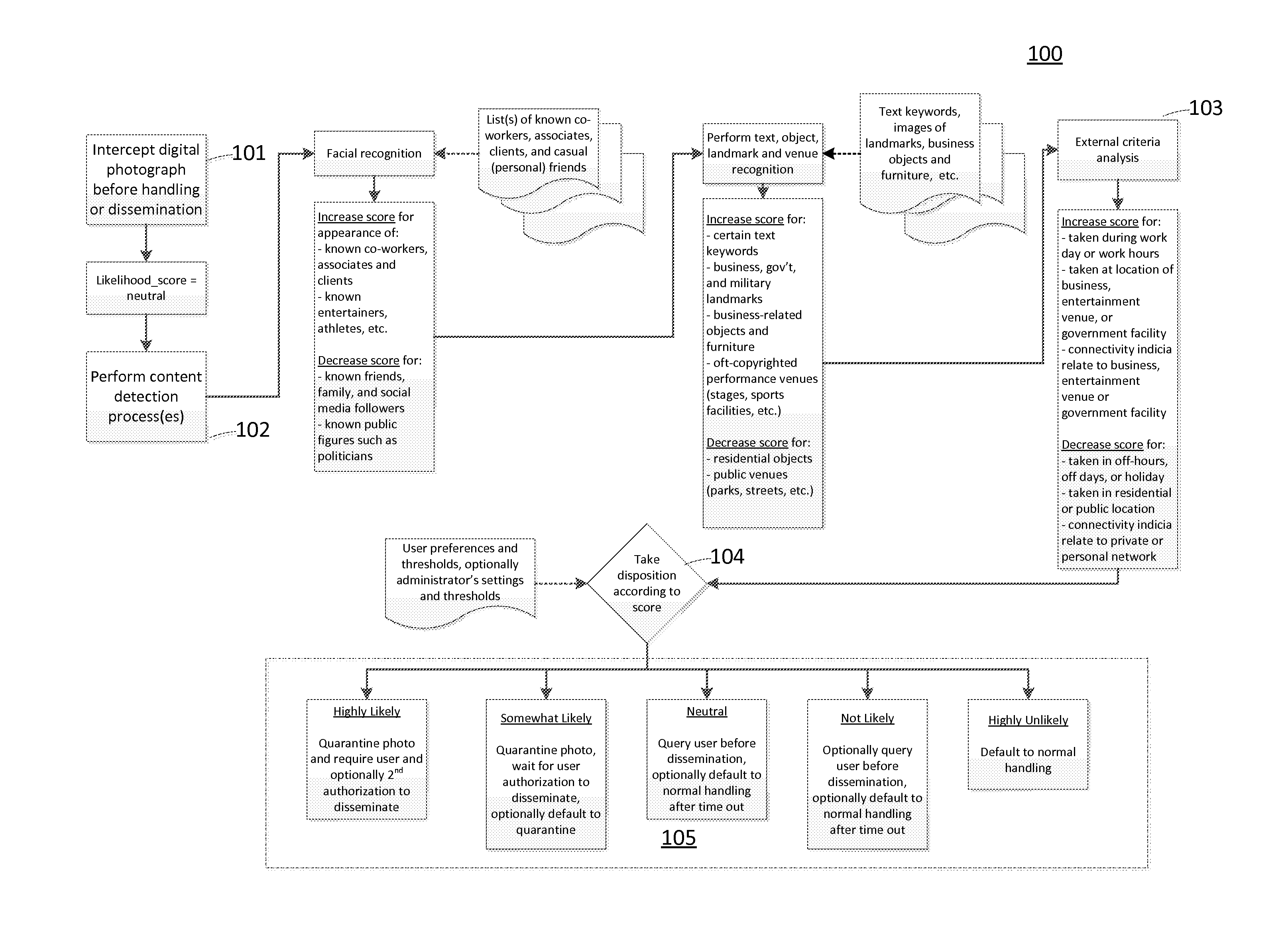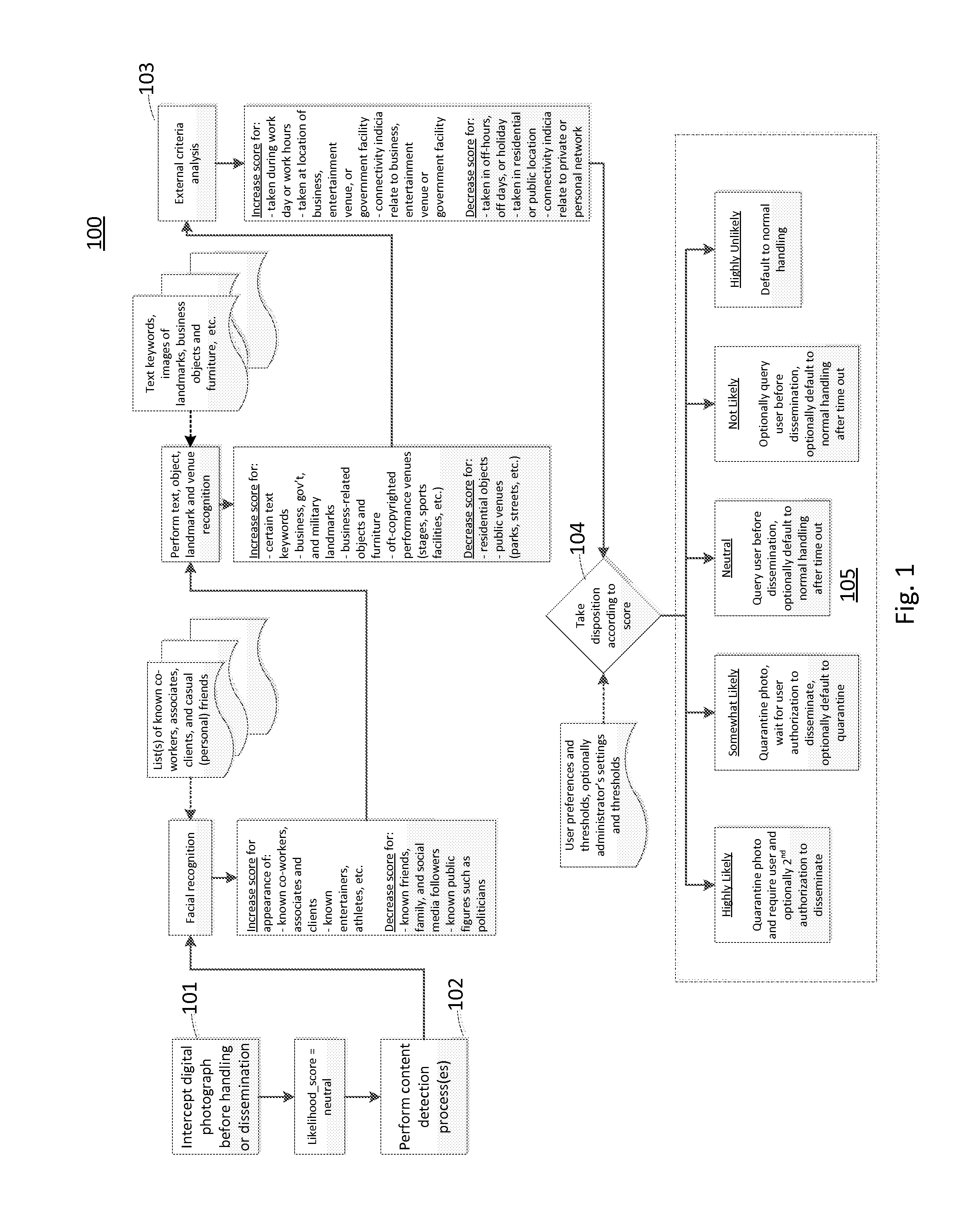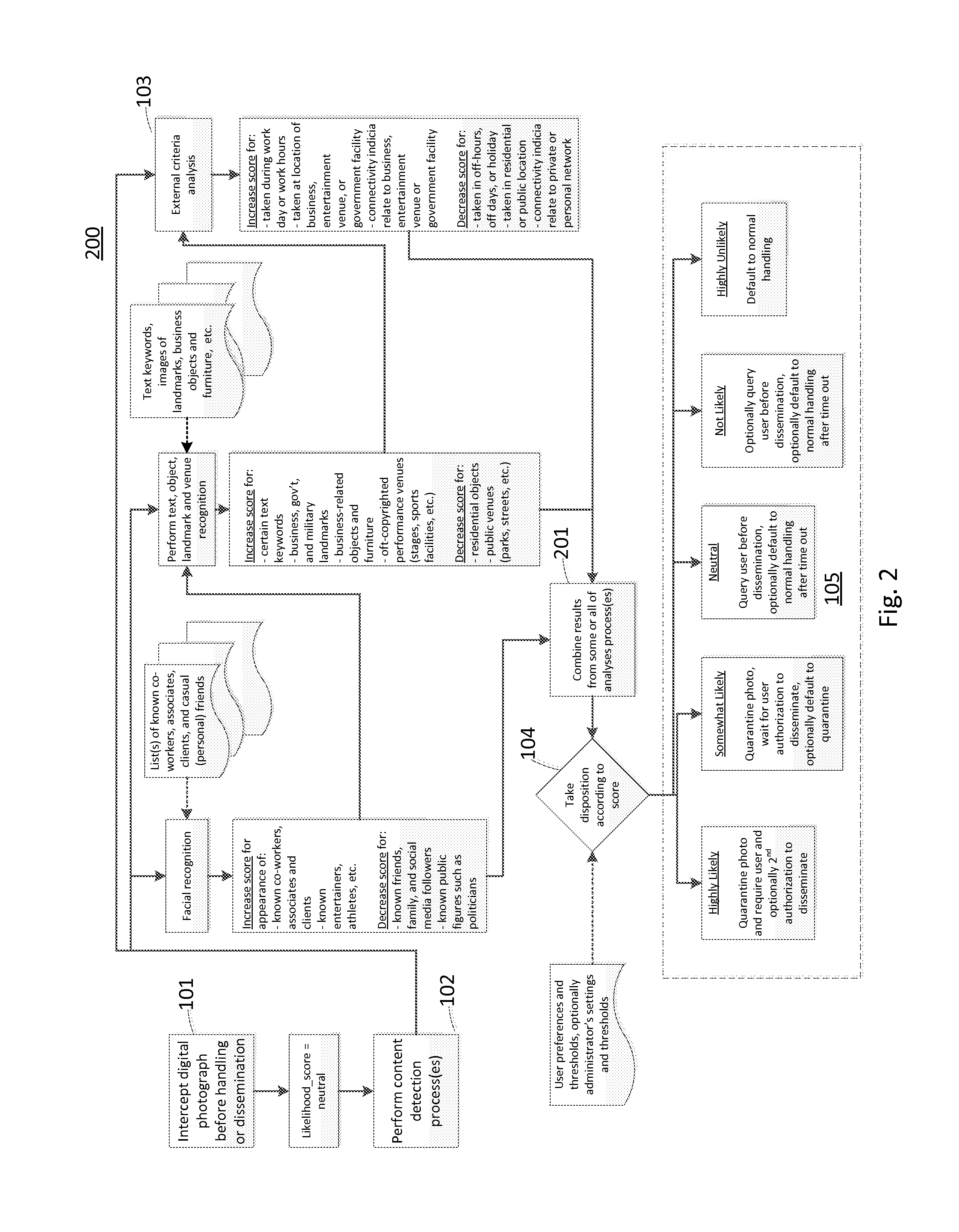Detecting and Flagging Likely Confidential Content in Photographs to Prevent Automated Dissemination
a technology for flagging and confidential content, applied in the field of detection and flagging likely confidential content in photographs to prevent automated dissemination, can solve the problem of little that can be done to “put toothpaste back in the tub
- Summary
- Abstract
- Description
- Claims
- Application Information
AI Technical Summary
Benefits of technology
Problems solved by technology
Method used
Image
Examples
process embodiment
Second Logical Process Embodiment
[0042]Turning to FIG. 2, a second logical process embodiment (200) is shown and which is also suitable for realization in computer program instructions stored in a computer-readable, tangible storage memory device for causing a process to perform certain operations. This logical process (200) is similar to that of FIG. 1, however, the various analyses processes are performed in parallel or simultaneously to each other, and then their various results are combined (201), such as by straight averaging them, averaging them in a weighted fashion, or adding them to each other. Thresholds for declaring the likelihood of confidential content must be adjusted according to the combining method, to reflect the possible range of scores and outputs.
example user experiences
First Example
[0043]After collaborating with co-workers on a highly confidential project at work, a user takes a picture of the whiteboard in the conference room where they are meeting (see FIG. 3, for example). Based on the image contents being recognized as a business-related furniture object (a whiteboard with markings), the geo-location for where the picture was captured (on a corporate campus facility), and the time and day when the image was captured (11:36 am on a work day), the system determines that this picture is likely confidential because each of these factors causes the likelihood score to be increased from neutral. As a result, the image is intercepted by the invention and is not automatically distributed to the user's online photo sharing stream service, social network page or personal photo album.
second example
[0044]A user takes a picture using his or her camera phone of family members on a holiday at their home. Based on the image contents (people), additionally recognizing some of the faces in the photo as being designated as family members according to a social network page for the user, further considering that the geolocation for the photo is a private residence, and in addition considering the time and day of the photo (3:00 PM on a weekend) is not likely a work day or time, the digital picture is flagged as having a very low likelihood of containing confidential or sensitive content (e.g. “public” or “shareable”) because all of these factors cause the likelihood score to be decreased from neutral. As a result, the image is allowed to be handled normally (e.g. automatically distributed to the user's online photo album, photo streaming service, or social network page).
PUM
 Login to View More
Login to View More Abstract
Description
Claims
Application Information
 Login to View More
Login to View More - R&D
- Intellectual Property
- Life Sciences
- Materials
- Tech Scout
- Unparalleled Data Quality
- Higher Quality Content
- 60% Fewer Hallucinations
Browse by: Latest US Patents, China's latest patents, Technical Efficacy Thesaurus, Application Domain, Technology Topic, Popular Technical Reports.
© 2025 PatSnap. All rights reserved.Legal|Privacy policy|Modern Slavery Act Transparency Statement|Sitemap|About US| Contact US: help@patsnap.com



